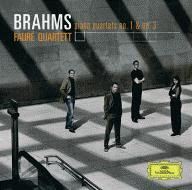Fifth Symphonies...
Shingleton writes, "If you want to capture the essence of a composer's style you will find it remarkably often in their Fifth Symphony. Think of Beethoven, Bruckner, Sibelius, Shostakovich, Vaughan Williams, Mahler, Martinů, Prokofiev, Nielsen and Tchaikovsky. Their Fifth Symphonies are not, necessarily, their greatest works, but somehow they capture the unique voice of those composers." I am familiar with the symphonies in question by Beethoven, Bruckner, Shostakovich, Vaughan Williams, Mahler and Prokofiev and I agree that each of their 5th symphonies give a good example of each composers style.
Their first symphonies tend to more novice, immature. Beethoven's first is still firmly rooted in his classical background and has little of the romantic flavor of his fifth. Mahler's first is amazing, but no where near the score of his fifth. Shostakovich wrote his first his last year in University so understandably novice, while Prokofiev's first is charming but simplistic. Style comes with maturity and isn't age, but experience. After writing a few symphonies, their experience shines through.
One of the 'complaints' about my first symphony was a lack of strong style. Some of the comments I've received suggest the first movement is a bit too Schubert like, while the fifth movement had elements of Copeland and Holst (both influences in my music, so not surprising). Ives, Bernstein and Shostakovich are also mentioned in terms of style. The only movement in my symphony that has sense of individual style, something that says "Chip Michael" is the third movement.
It begged the question, "what is my style?" and I began researching, re-listening, and reflecting on my music (both the Symphony No 1 and the String Quartet No 1 written while I was finishing the 5th movement of the symphony and having a great overall sense of "Chip-ness" than the symphony). The general feeling is a like repeating irregular patterns, particularly with the number 7 (and other prime numbers) - the influence of minimalism. Tonality and melody are important, with jazz influences leading me toward the use of tri-tones, minor seconds (or ninths) and descending chord progressions. My music isn't always dark, but there is always a sinister sense to it, something lurking under even the lightest of melodies. However, it is the rhythm that gives my music the most modern edge and a voice all its own.
The third movement of my symphony is entitled, "You can't catch rabbits with drums" and features the percussion section in a relentless seven and a half minutes of constant thunder. It was written to be played by three percussionist and a timpani player, using a timpani, bass drum, two snare drums, tom-toms and gong. In Mr Smith's article, he speaks about Ms Zwilich's style, "Unorthodox percussion instruments (like the spiral cymbal, a dangling, serpentine coil that offers a distant roar) and techniques (timpani played with a model of wire brush known as dreadlocks) showed that Ms. Zwilich keeps up with recent trends." In the Pastoral Symphony by Brett Dean (reviewed here 19 October) also used a variety of different percussion, so much so it almost felt as if the piece was for orchestra and percussion section. Now, it doesn't seem right to complain about a piece of music that features so much percussion when I entitle a movement with the same intent. However, I find that, while some variance of the percussion instruments can lead to interesting colors, too much variance feels more like the orchestra has Attention Deficit Disorder. My third movement incorporates modern rhythms, but keeps the orchestration simple, enjoying the colors that a few instruments can express.
As I work on the violin concerto, I am aware of rhythm, intigral to every fascit of the music, constantly shifting while I struggle to determine which time signature best represents the music while offering playability. The orchestra is pared down even more to a chamber symphony (single winds and [right now] a single timpani player). Part of this is to allow the solo violin to soar above the ensemble, but mostly it is to explore the colors possible in the ensemble without getting overwhelmed with choices. The sound of the solo violin dueting with the horn, flute or oboe is wonderful and doesn't require more. Pairing the flute with oboe, oboe with clarinet, horn with bassoon or the trumpet and the numerous varieties possible with strings provides more than enough choices. This piece isn't going to be a grand, horns blaring fanfare; it's a violin concerto and should highlight both the wonderful sounds of the violin and the virtuosity of the performer.
I don't know that I've found my voice just yet, but I'm closer. Perhaps when this is done I'll be ready to start on my second symphony, and take a few more steps toward the goal of expressing myself fully in the fifth.
Work has begun on a website where I can post my music for you to listen to. Hopefully by the end of year it will be ready for prime time - so watch this space for updates.

Comments